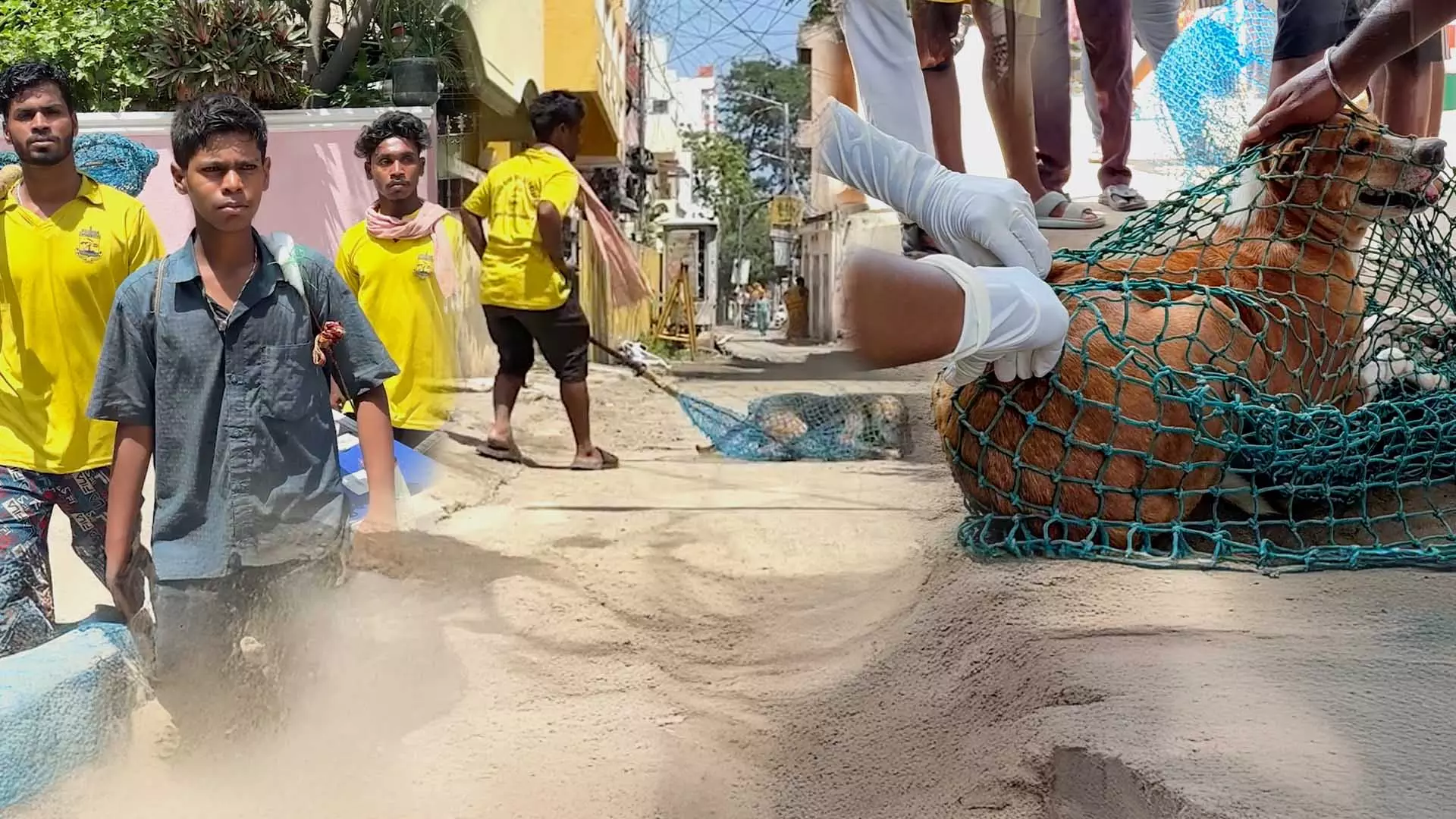
Stray dog mission in Chennai relies on Narikuravar community
Chennai’s Narikuravar dog catchers risk bites and backlash to vaccinate strays. The Federal follows them as they go about trying to keep the city safe

Chennai is battling a surge in dog bites and growing fears of rabies. To fight back, the Greater Chennai Corporation has deployed special teams to catch, vaccinate, and release stray dogs.
At the heart of this mission are five men from the Narikuravar community — Ellappan, Siranjeevee, Surya, Prakash, and Sivamani — who have become unlikely heroes.
Every morning, these men walk the streets with nets and whistles, setting out to trap dogs safely. They belong to a gypsy community that has long been pushed to the margins of society, but today, they are central to protecting public health in the city.
Catching the strays
Each team has five dog catchers, two student veterinary doctors, one corporation veterinarian, and a supervisor. Together, they plan their route and strategy before stepping into action.
Also read: 'Life imprisonment' for dogs that bite humans twice in Uttar Pradesh
The job started just a month ago, on a three-month contract.
"We report by 6 am,” said Sivamani, the youngest catcher in the team, showing six fingers to emphasise their early start.
The Corporation has set an ambitious target: nearly 100 dogs per team, per day. In just a month, over 46,000 dogs have been vaccinated against rabies, and more than 12,000 microchipped and geo-mapped.
Rules of the job
Before being sent out, the catchers were trained on how to handle dogs gently. “They taught us how to catch the dogs. We were asked to be gentle while catching and releasing,” said Surya.
Also read: How West Bengal is teaching kids compassion for strays, ways to avoid dog bite
But even with training, the work is far from safe. “Dogs scratch us sometimes. When we release them from the nets, there is a danger of dogs biting our thighs. Such incidents have happened to nearly 10 people in various teams,” he explained.
To reduce risk, they were given preventive injections against rabies. Yet, when asked about medical insurance, the answer was a blunt no after a short pause.
Facing hostility
The dangers don’t stop with dogs. Many residents mistake them for catchers who take strays away permanently. This often leads to arguments, threats, and even physical attacks.
Also read: Noida authority launches stray dogs survey; plans new shelters, sterilisation drive
“They do pick up fights, some even beat us,” said one catcher. “We explain that doctors will only inject the dogs and release them. Still, there are instances where we were scolded or beaten.”
For some in the Narikuravar community, this work has changed their relationship with dogs entirely. “When I was a kid, I remember dogs chasing me and trying to bite me. I was scared of dogs. Now, after catching them regularly, I’m no longer afraid. Instead, the dogs are afraid of me,” said Siranjeevee.
Low pay
Despite the risks, the pay remains meagre. “Our salary is Rs 700, and we get an additional Rs 100 for food. We are paid only after completing each zone,” said Ellappan. Sundays are their only break.
The work is gruelling — walking long stretches under the hot sun, climbing walls, chasing dogs through alleys, and dealing with angry residents. Yet, they continue every day, motivated by the dignity of keeping the city safer.
In every whistle blown, every net thrown, and every dog released back to the street, there is a quiet heroism. Uncelebrated and unseen, these men from the Narikuravar community are the ones holding the line against rabies in Chennai.
(The content above has been transcribed from video using a fine-tuned AI model. To ensure accuracy, quality, and editorial integrity, we employ a Human-In-The-Loop (HITL) process. While AI assists in creating the initial draft, our experienced editorial team carefully reviews, edits, and refines the content before publication. At The Federal, we combine the efficiency of AI with the expertise of human editors to deliver reliable and insightful journalism.)

